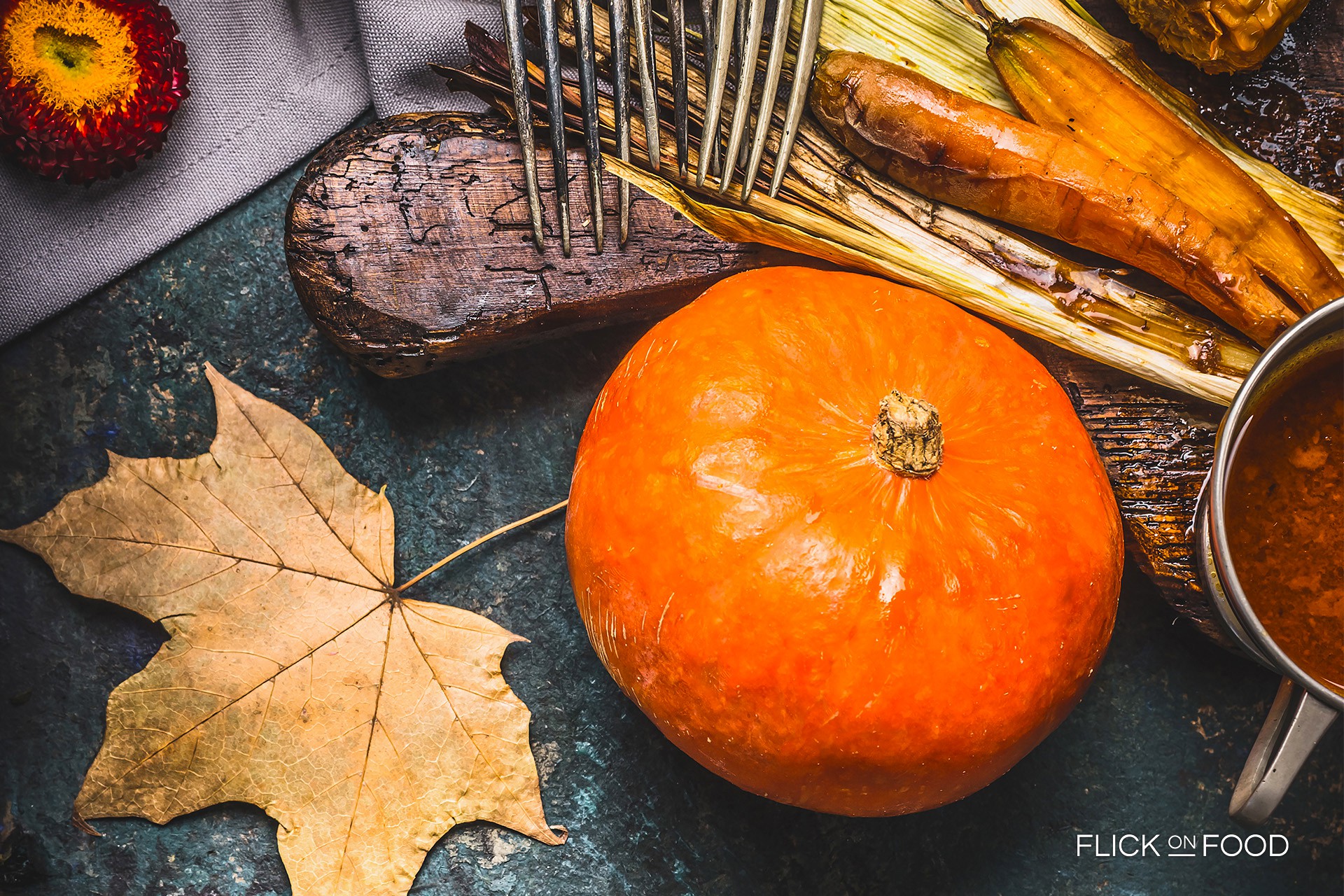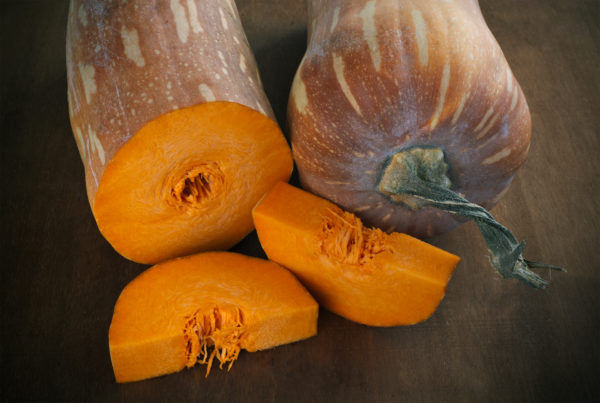
You can eat the skin of this pumpkin… It’s perfect grated on a salad.
Origin
Its name alludes to its Japanese roots, and in fact, it was originally from the Island of Hokkaido in Japan. It’s not uncommon to see it sold under the name Red Kuri squash.
The Hokkaido pumpkin is a variety of the species Cucurbita and is a climbing plant that may also be called onion squash or Potimarron.
Even though its roots are in the East, the Hokkaido pumpkin is cultivated many other places as well, including Europe. That’s because it quickly adapts to the climate and terrain. Not only that, but it’s relatively easy to cultivate — it can even be planted in a pot out on the balcony.
When ripe, the pumpkin has reddish orange skin and bright yellow flesh. It’s round and slightly teardrop-shaped, somewhat reminiscent of an onion, and is smaller than most other types of squash.
Cookit
Its taste, colour and texture make the Hokkaido pumpkin a versatile ingredient in the kitchen: sweet or savory, it can be the main ingredient for gnocchi, risottos, pies and jams. Its flesh is known for being sweet and somewhat floury, similar to a chestnut puree.
Unlike other varieties, Hokkaido pumpkins have a thin, tender skin that’s easy to eat. Its petite size means you can use it as a decorative bowl to serve a risotto with pumpkin and cabbage — a tempting combo, for the eyes as much as the tastebuds.
Did you know
As with other pumpkins, the Hokkaido variety is a good source of fiber, vitamins and minerals. It also provides plenty of calcium, potassium and iron. But watch out: the seeds have a much higher fat content than the flesh, so eat them in moderation if you’re watching your weight. Another reason to choose the Hokkaido pumpkin: it can be stored for longer periods and its sweetness intensifies over time, making it the perfect ingredient for baking delicious pies.









